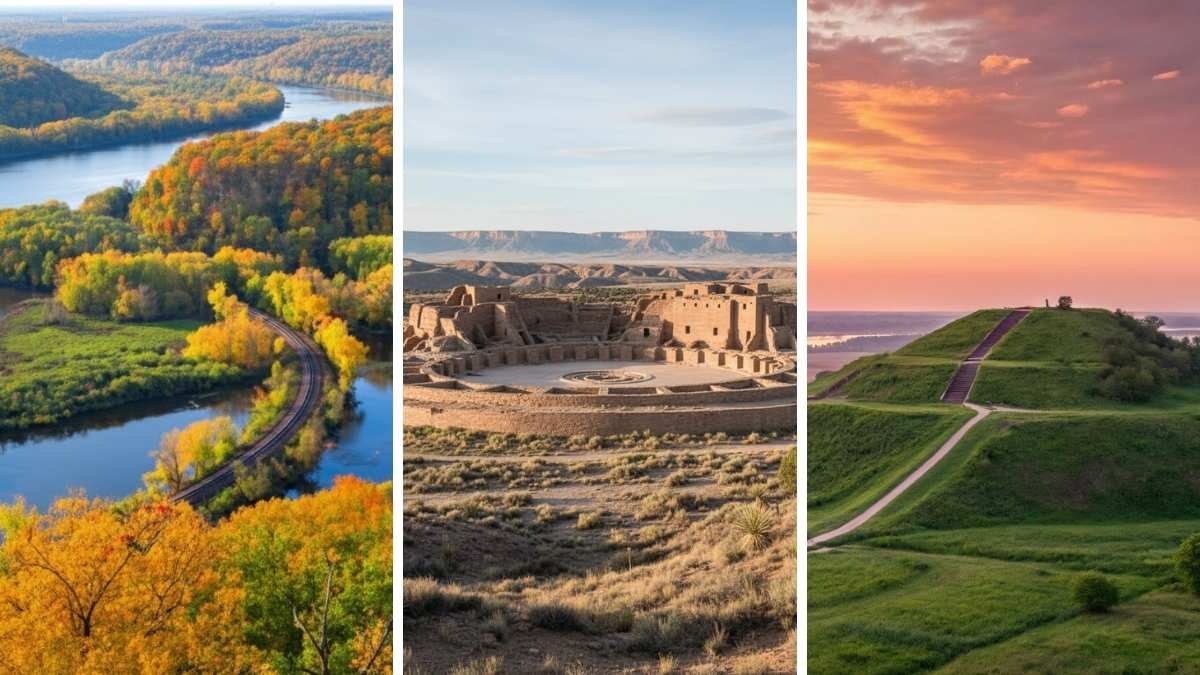
Beneath the forests, deserts, and river valleys of the United States lie stories far older than the nation itself—stories carved into stone, shaped into earth, and carried forward through living traditions.
These sites aren’t just places to explore; they’re gateways into worlds where ingenuity, resilience, and spirituality thrived for centuries.
Walking among them, you feel the presence of communities that shaped entire landscapes with meaning and purpose. Some locations hum with quiet reverence, others dazzle with sheer scale, but all invite reflection. If you’re ready to go beyond typical travel stops, here are twelve places where history still speaks.
1. Mesa Verde National Park – Colorado
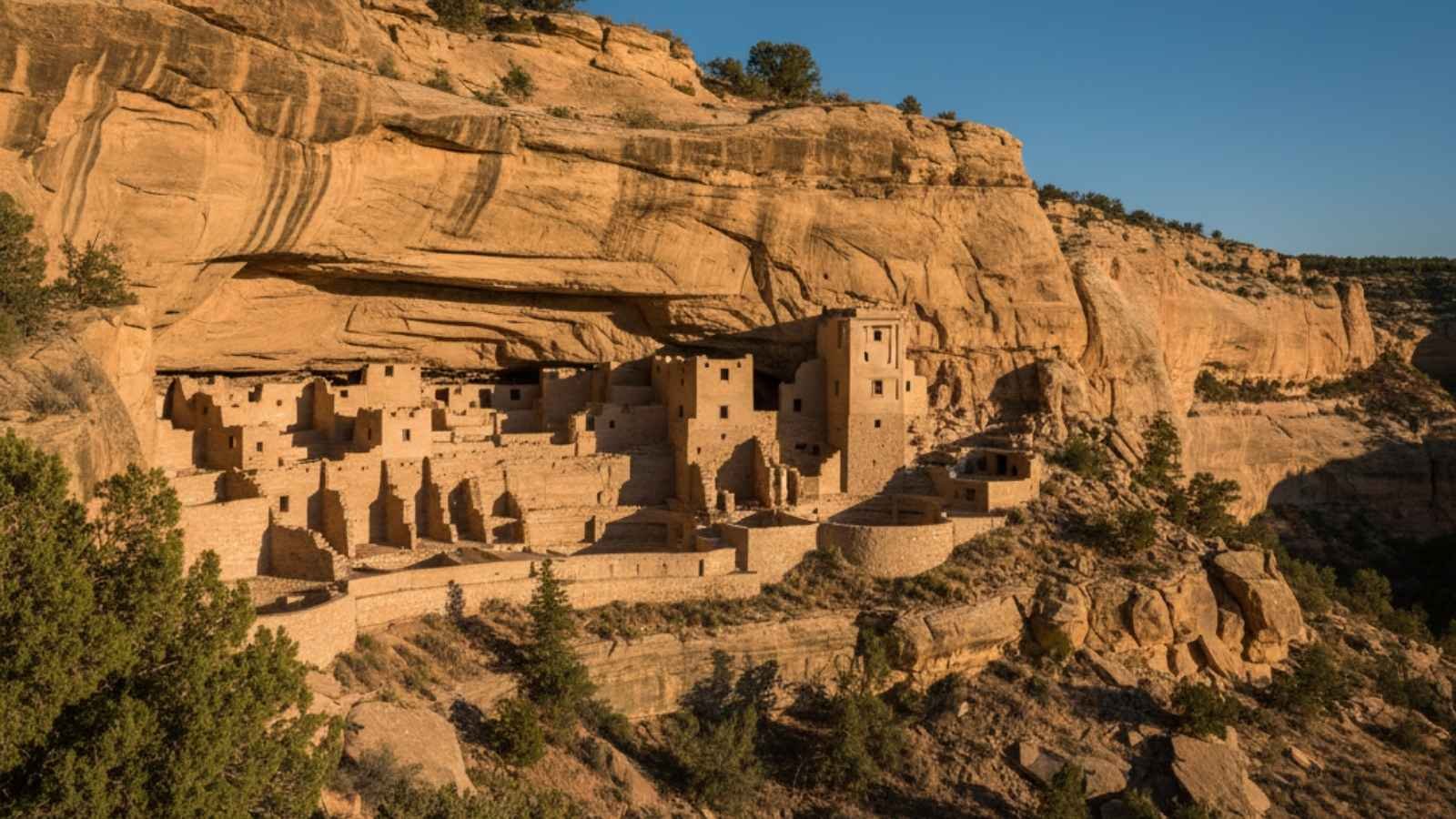
Mesa Verde is often called the crown jewel of Native American heritage sites in the U.S., and for good reason. Home to the Ancestral Puebloans, this park showcases some of the best-preserved cliff dwellings in North America. Walking through these ancient stone structures, it’s hard not to be struck by the ingenuity it must have taken to carve entire homes into towering canyon walls. The site feels alive with history, as if whispers of daily life still linger among the dwellings.
The highlight for many visitors is Cliff Palace, a massive and breathtaking dwelling that once housed more than 100 people. Standing before it, you can sense the rhythm of a community—family gatherings, farming rituals, and survival strategies that all took place centuries ago. What makes Mesa Verde stand out isn’t just its size or preservation, but the sheer creativity of adapting to such a rugged landscape with sustainable practices.
Beyond the ruins, the surrounding mesas and canyons create a powerful backdrop. Sunsets are particularly mesmerizing here, with golden light washing over stone walls built nearly 800 years ago. The experience feels less like visiting a park and more like stepping back into a living museum, layered with resilience and innovation.
Useful Details:
- Best Months to Visit: May through September (warm weather, ranger-led tours available).
- Don’t Miss: Cliff Palace, Balcony House, and Long House.
- Access Tip: Some cliff dwellings require tickets for guided tours—reserve early.
- Nearest Town: Cortez, Colorado.
2. Chaco Culture National Historical Park – New Mexico
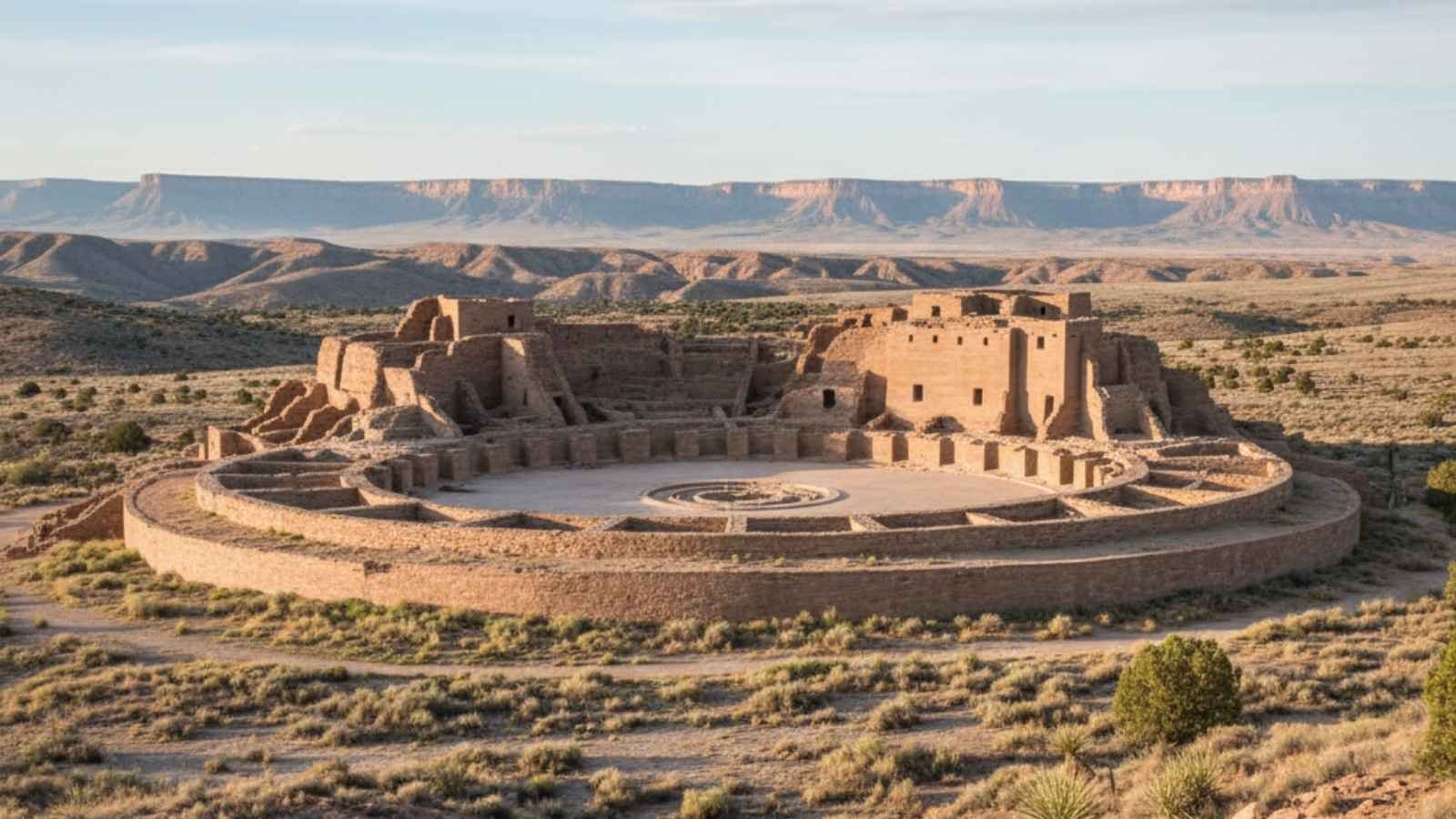
If Mesa Verde feels like a glimpse into a community’s daily life, Chaco Canyon feels like standing in the center of an ancient civilization’s heart. Between 850 and 1250 AD, Chaco was the hub of the Ancestral Puebloan world, with massive stone complexes that rivaled the scale of Roman structures. Walking through these monumental “Great Houses” is awe-inspiring—massive stone walls, perfectly aligned with solar and lunar cycles, hint at a society with deep astronomical knowledge.
The most striking thing about Chaco is its sense of scale and precision. Some of the multi-story structures contained hundreds of rooms, built with stonework so advanced it feels almost modern. Roads stretched out for miles in perfectly straight lines, connecting Chaco to other cultural centers across the region. You’re left wondering how such feats were achieved in such an isolated and harsh desert environment.
Even today, visiting Chaco feels like an adventure. The remote drive into the canyon adds to the mystique, and once there, the quietness of the desert amplifies the sense of being in a sacred place. The stargazing here is also legendary—designated as an International Dark Sky Park, Chaco offers some of the clearest night skies in the country.
Useful Details:
- Best Months to Visit: Spring (April–May) and Fall (September–October) for mild weather.
- Don’t Miss: Pueblo Bonito, Chetro Ketl, and stargazing programs.
- Access Tip: The last stretch of road is rough dirt—plan with a reliable vehicle.
- Nearest Town: Nageezi, New Mexico (but Farmington or Gallup are more practical bases).
3. Taos Pueblo – New Mexico
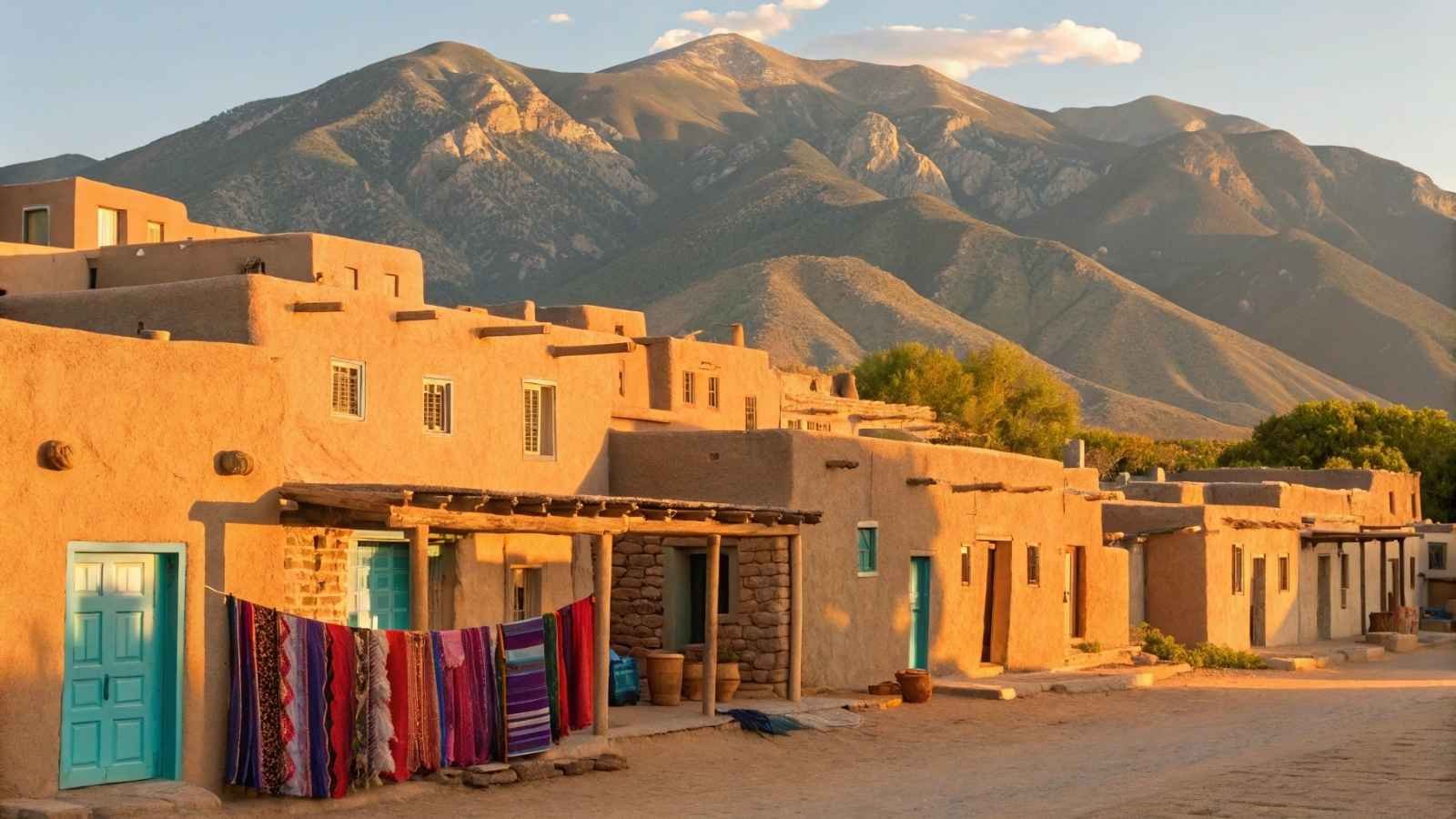
A visit to Taos Pueblo is unlike any other cultural site on the list because it’s not just ruins—it’s a living community. For over 1,000 years, the Taos people have called this spot home, and today, their multi-storied adobe buildings stand as a testament to both tradition and resilience. This UNESCO World Heritage Site isn’t just a monument—it’s a living, breathing village where cultural practices continue.
What makes Taos Pueblo so compelling is its continuity. The thick-walled adobe homes, some rising up to five stories, have been maintained and lived in by generations of Taos people. Walking around, you’ll see the traditional ovens, handmade crafts, and perhaps even hear the soft sounds of the Tiwa language. It’s a striking balance of past and present, and being able to interact with community members adds an intimate dimension that alone can’t provide.
The surrounding scenery only adds to the magic. Nestled against the Sangre de Cristo Mountains, the pueblo glows in warm earth tones under the high desert sun. Visiting here feels deeply grounding—you leave with not only an appreciation for architecture and history, but also a respect for the endurance of living culture.
Useful Details:
- Best Months to Visit: Spring and Fall for mild weather.
- Don’t Miss: The multi-storied adobe North and South Houses.
- Access Tip: The pueblo is a sacred place—follow community rules about photography and restricted areas.
- Nearest Town: Taos, New Mexico.
4. Cahokia Mounds State Historic Site – Illinois
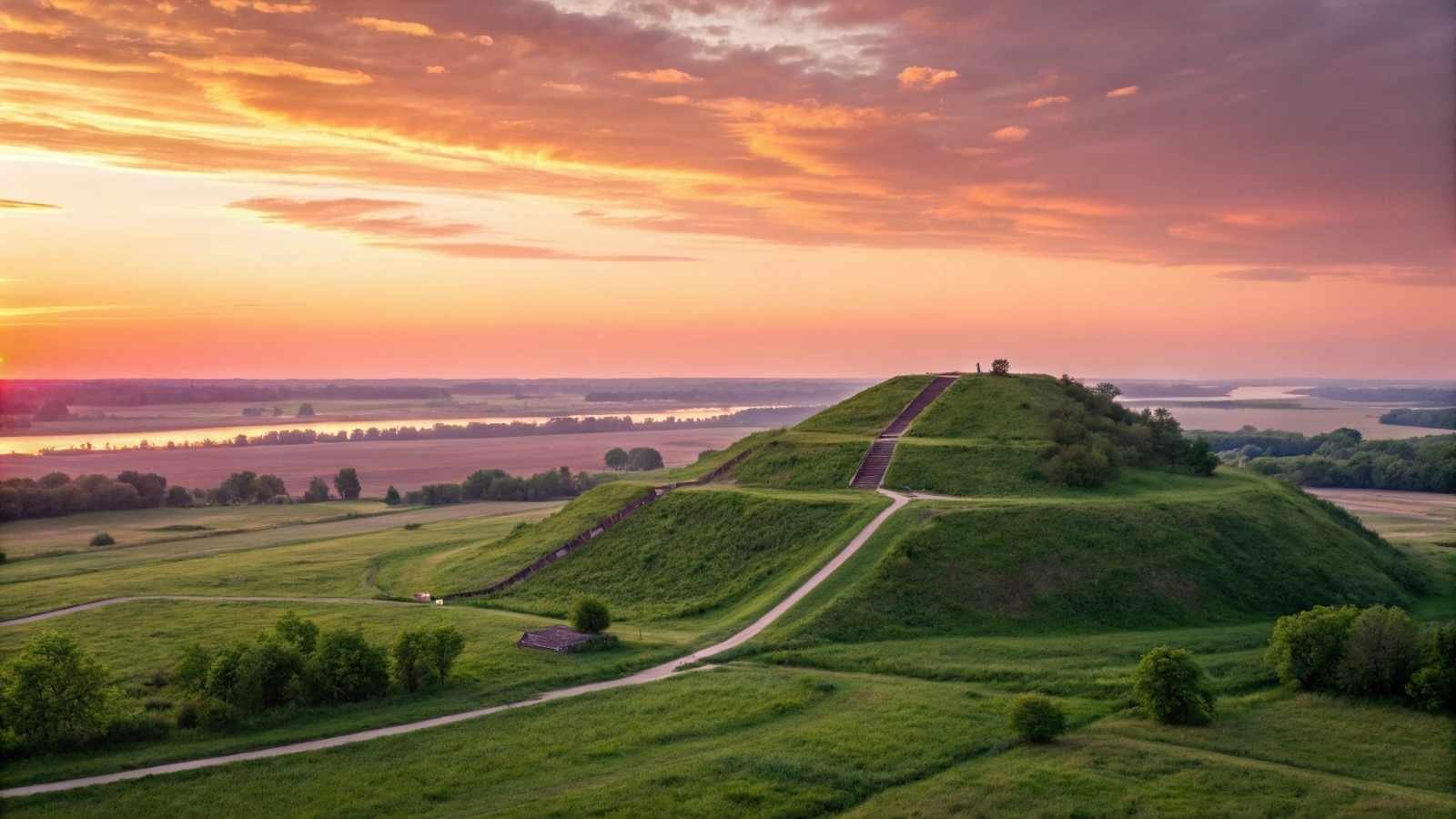
When people think of ancient American civilizations, their minds often leap to the Southwest. But Cahokia, near present-day St. Louis, tells another story—one of the largest pre-Columbian cities north of Mexico. Around 1050–1350 AD, this city thrived with tens of thousands of people, and its monumental earthen mounds stand as evidence of its complexity.
The most famous is Monks Mound, the largest prehistoric earthen construction in the Americas. Standing atop it, you get sweeping views of the Mississippi River valley and can almost sense the scale of Cahokia’s influence. This wasn’t just a settlement; it was a center of trade, governance, and spiritual life, complete with plazas, woodhenges (calendrical circles of posts), and neighborhoods that spanned miles.
What’s remarkable is how Cahokia reshapes common narratives. It challenges the idea that complex societies only thrived in certain parts of North America. Standing among these massive earthworks, you realize the ingenuity and social organization required to build them. It’s a site that doesn’t just preserve history—it reframes it.
Useful Details:
- Best Months to Visit: April–October for comfortable weather.
- Don’t Miss: Monks Mound, Woodhenge, and the interpretive center.
- Access Tip: Wear comfortable shoes—the site is spread out.
- Nearest City: St. Louis, Missouri.
5. Acoma Pueblo (Sky City) – New Mexico
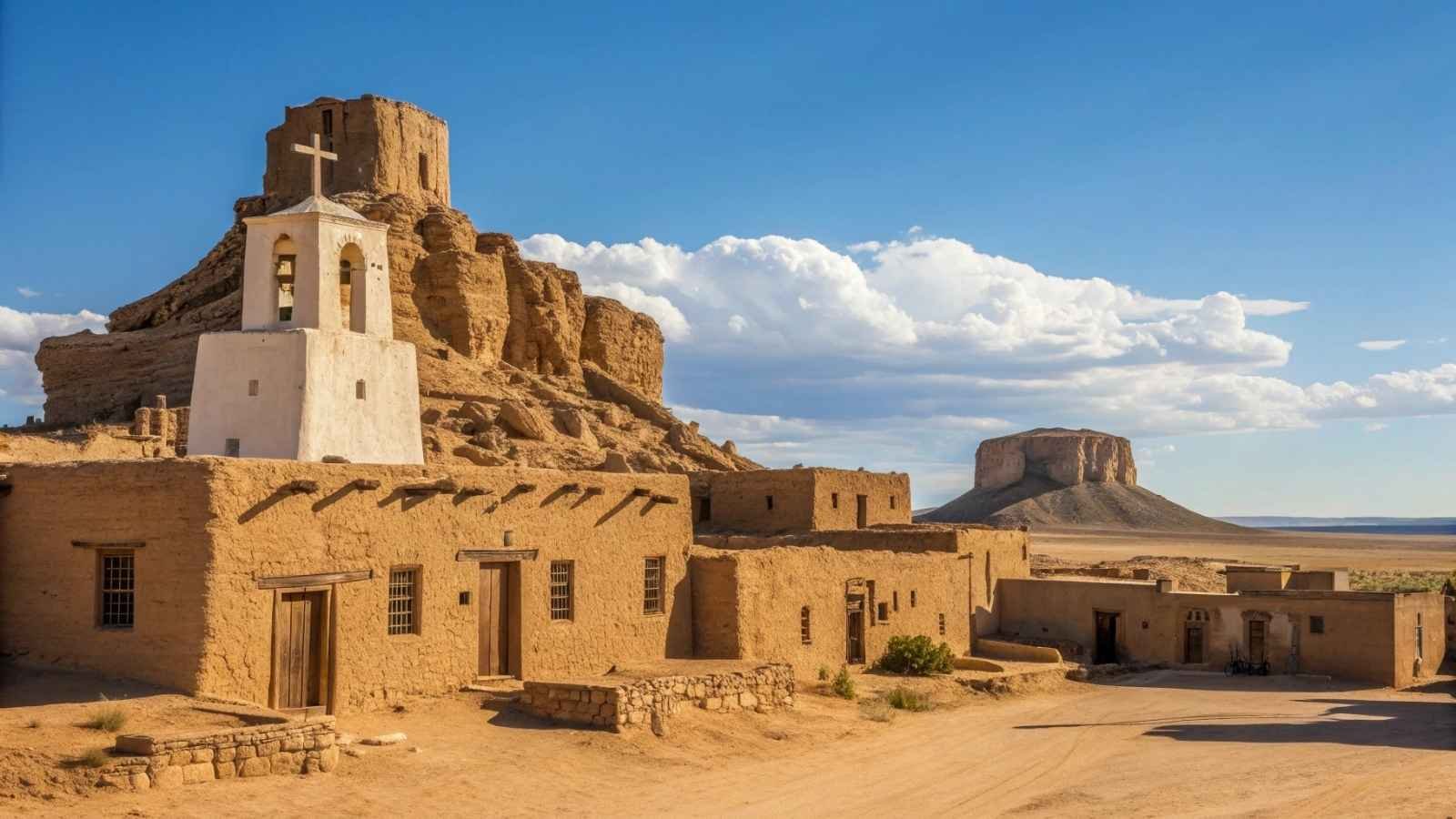
Perched on a sandstone mesa 370 feet above the desert floor, Acoma Pueblo—known as “Sky City”—is one of the most visually stunning cultural sites in the U.S. With over a thousand years of continuous habitation, it’s among the oldest communities in North America. Its location is jaw-dropping; from atop the mesa, the sweeping desert views are unmatched.
The pueblo’s adobe and sandstone homes are clustered tightly together, forming a labyrinth of narrow streets. It’s a place where the architecture seems to grow directly out of the rock itself, blending seamlessly with the land. Visiting here provides an unforgettable sense of perspective—not only on the ingenuity of Acoma’s ancestors but also on the community’s ability to endure in such an exposed, dramatic environment.
Cultural tours led by Acoma guides add depth, offering insights into history, traditions, and modern life. Sky City strikes a unique balance: it’s both a striking archaeological site and a living community that continues to honor its traditions. The fact that you have to climb up to reach it only enhances the sense of entering a place apart from the modern world.
Useful Details:
- Best Months to Visit: March–May and September–November.
- Don’t Miss: San Esteban del Rey Mission (built in 1629) and the cultural center museum.
- Access Tip: Photography requires a permit, and some areas are off-limits—respect local rules.
- Nearest Town: Grants, New Mexico.
6. Bandelier National Monument – New Mexico
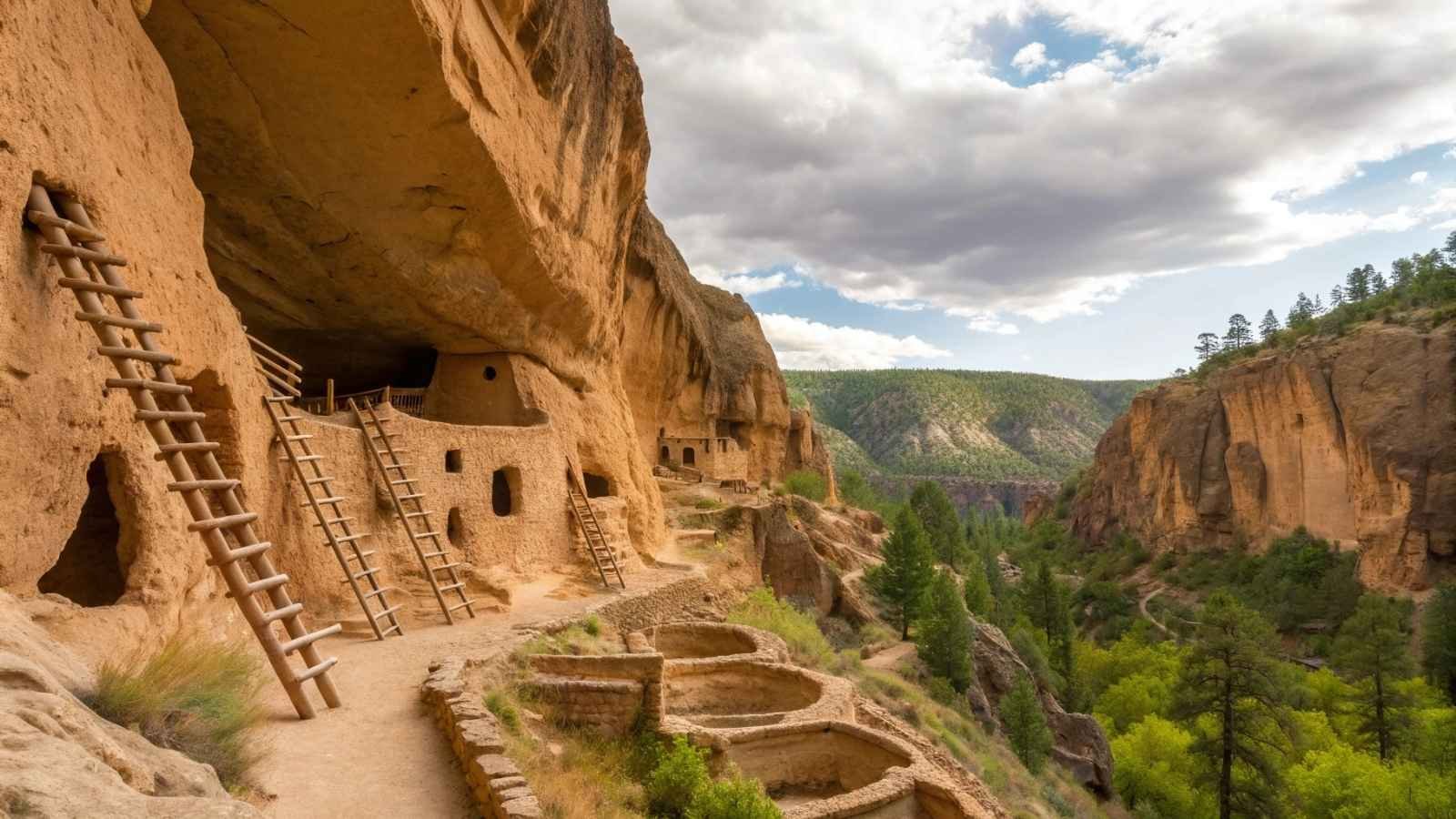
Bandelier feels like a hidden gem tucked into the rugged canyons near Los Alamos. What sets it apart is the combination of cliff dwellings and sweeping landscapes that transport you straight into the world of the Ancestral Puebloans. Here, you can walk through ancient homes carved directly into the volcanic tuff cliffs and climb ladders into the kivas, small ceremonial chambers that hold centuries of spiritual meaning.
The contrast between the narrow ladders, darkened rooms, and the open canyon floor below makes the experience unforgettable. Bandelier isn’t just about ancient architecture; it’s about connecting with the land itself. Trails wind past petroglyphs and ruins, leading into wilderness areas where you can almost sense the footsteps of those who lived here.
What makes Bandelier unique is how accessible and interactive it feels compared to some other sites. You’re not just looking at history from afar—you’re stepping into it, crouching inside rooms, and seeing firsthand how people adapted to their environment.
Useful Details:
- Best Months to Visit: Spring and Fall (pleasant hiking weather).
- Don’t Miss: Main Loop Trail, Alcove House (climb up to a cliff kiva).
- Access Tip: Summer can get hot—bring water for hikes.
- Nearest Town: Los Alamos, New Mexico.
7. Poverty Point World Heritage Site – Louisiana
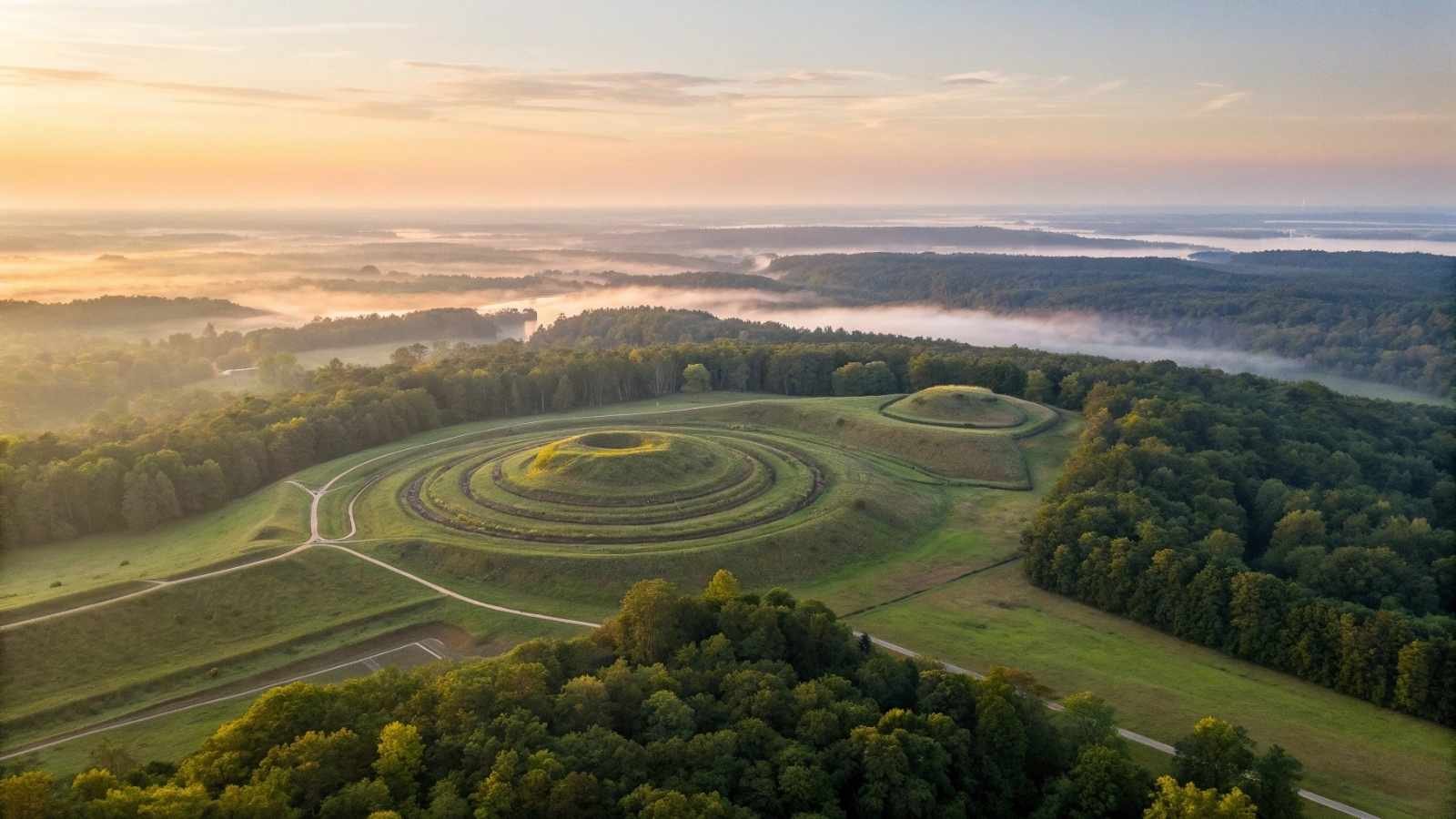
Tucked into the bayous of Louisiana, Poverty Point is unlike any other Native American site in the U.S. It dates back more than 3,000 years, making it one of the oldest and most mysterious. Instead of stone dwellings or adobe villages, the site consists of massive earthen ridges and mounds that form concentric arcs, covering nearly 400 acres.
The sheer scale is astounding. Archaeologists believe Poverty Point was once a bustling center of trade, drawing people from across the Mississippi Valley. Its complex design suggests a society with advanced knowledge of engineering and organization long before other monumental cultures rose in North America.
Standing at the top of the massive Bird Mound, you get a sense of just how advanced this community was. There’s still an air of mystery here—so much remains unknown about the exact daily life and rituals, which makes visiting feel both humbling and thought-provoking.
Useful Details:
- Best Months to Visit: October–April (avoid the heavy summer humidity).
- Don’t Miss: Bird Mound (Mound A), visitor center exhibits.
- Access Tip: The site is spread out—plan to walk or drive the loop road.
- Nearest Town: Epps, Louisiana.
8. Ocmulgee Mounds National Historical Park – Georgia
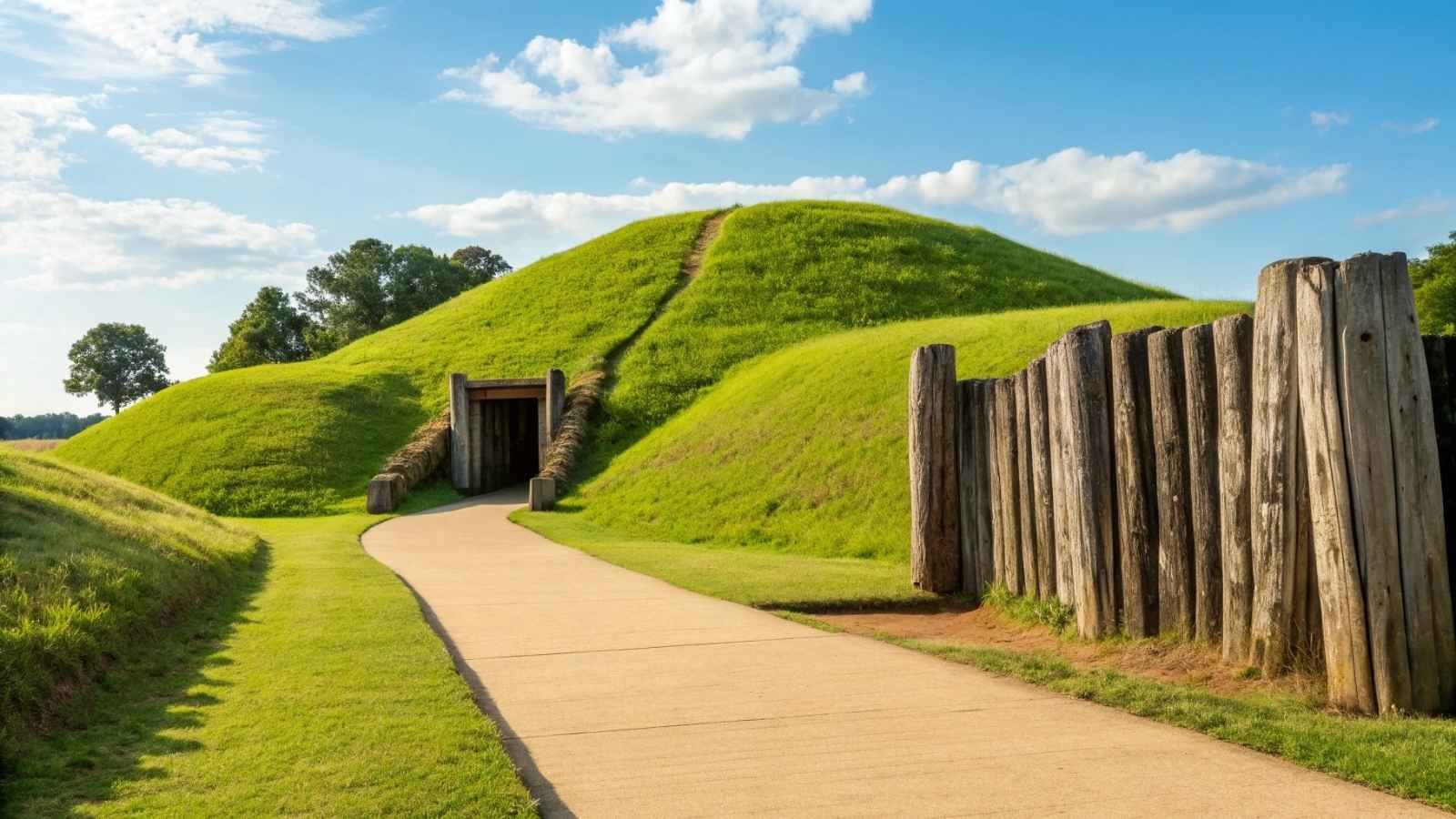
Ocmulgee Mounds is one of those places that surprises visitors with its rich history right in the heart of Georgia. This site showcases more than 12,000 years of continuous human habitation, with some of its most iconic earthworks built by the Mississippian culture around 900 AD.
The centerpiece is the Great Temple Mound, which rises above the surrounding plain and offers a commanding view. Standing there, you can sense the ceremonial importance it once held. Nearby, reconstructed earth lodges allow you to step inside spaces where ceremonies were carried out, complete with original clay floors.
What makes Ocmulgee special is its deep layering of history. It’s not just one civilization’s story—it spans millennia, from Paleo-Indian hunters to Mississippian mound builders to later Muscogee (Creek) traditions. That continuity makes the site feel like a living timeline of Native American history in the Southeast.
Useful Details:
- Best Months to Visit: Spring and Fall for outdoor exploring.
- Don’t Miss: The Great Temple Mound, Earth Lodge, and visitor center museum.
- Access Tip: The Ocmulgee Indian Celebration in September brings cultural demonstrations and performances.
- Nearest City: Macon, Georgia.
9. Hopi Mesas – Arizona
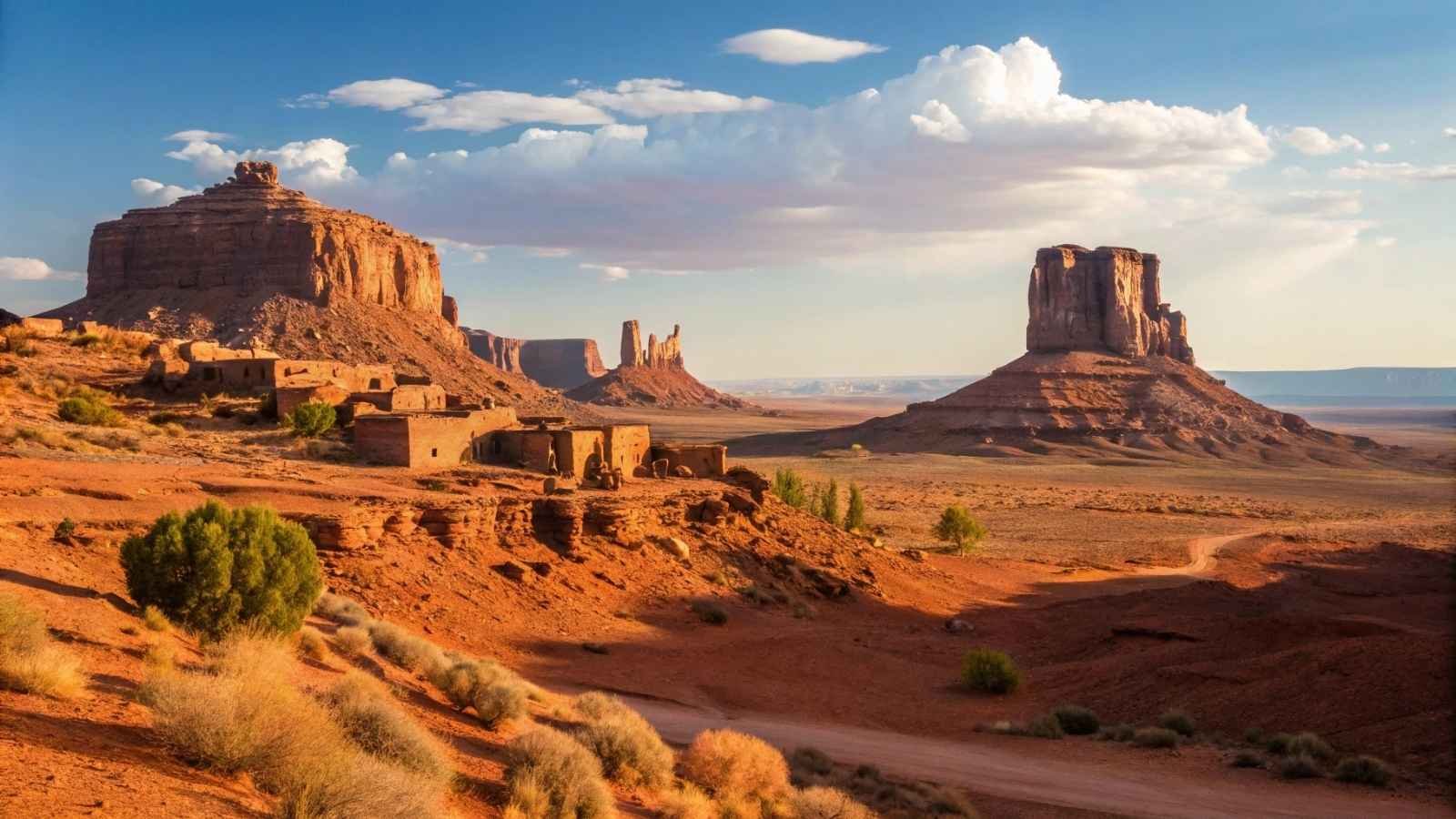
Unlike sites that are purely archaeological, the Hopi Mesas in northeastern Arizona are home to a living culture. The Hopi people have lived here for more than a thousand years, and the villages perched atop three mesas are still active communities today.
Visiting the mesas offers a rare window into continuity and tradition. The stone villages blend into the desert landscape, and while visitors are welcome, you’re always aware that this is not just history—it’s home. Guided tours led by Hopi members offer authentic perspectives, whether you’re learning about farming practices, pottery traditions, or spiritual ceremonies.
What makes the Hopi Mesas so powerful is the sense of cultural survival. In a world where so much has changed, these communities have maintained their identity and traditions in the very same landscape their ancestors did. That resilience leaves a lasting impression on visitors.
Useful Details:
- Best Months to Visit: Spring and Fall for mild weather.
- Don’t Miss: Guided cultural tours, local Hopi art and crafts.
- Access Tip: Photography is restricted—respect community rules.
- Nearest Town: Polacca, Arizona.
10. Pipestone National Monument – Minnesota
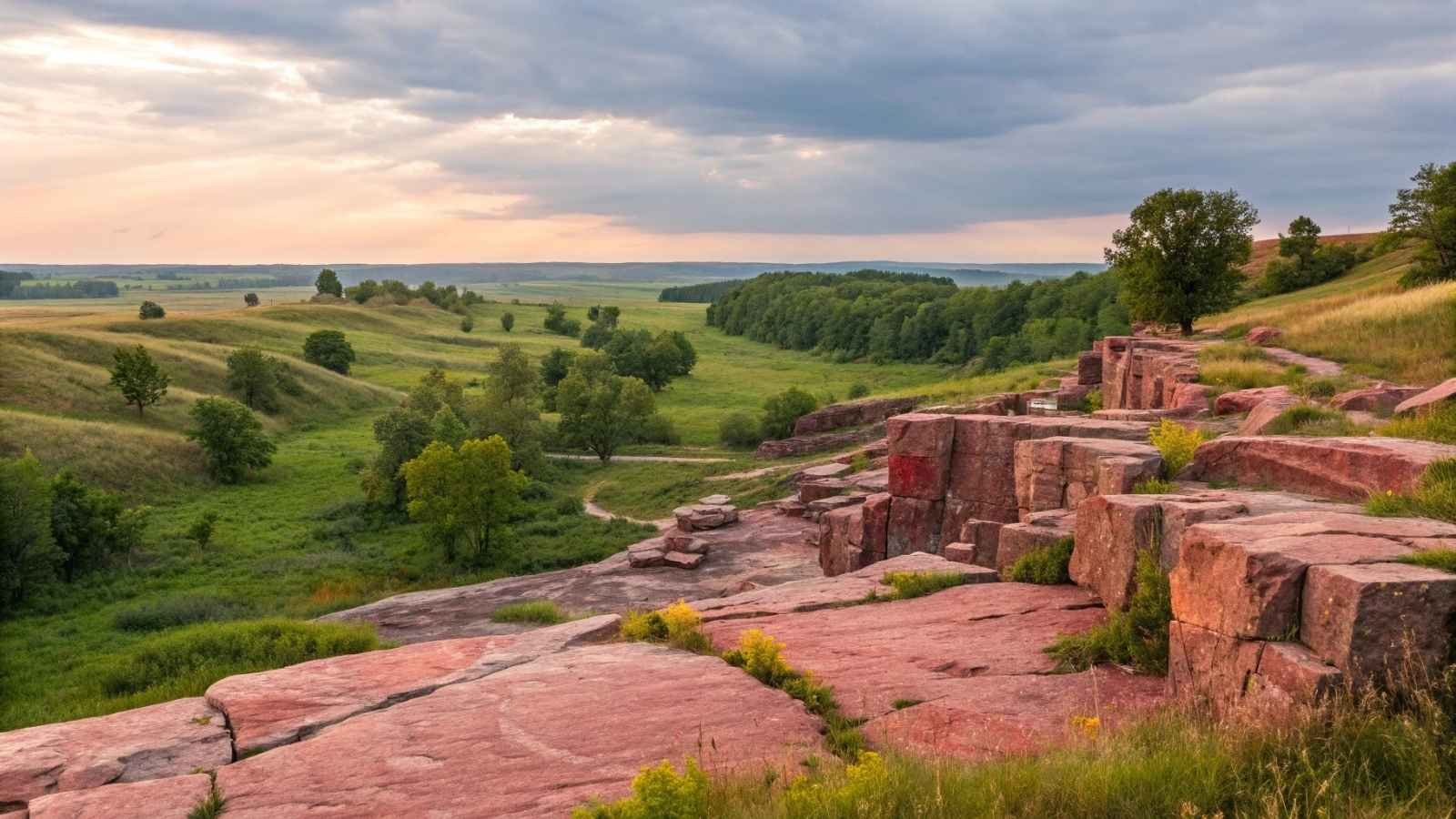
At Pipestone, the story isn’t about grand cities or towering ruins—it’s about sacred stone and the traditions tied to it. For centuries, Native peoples have come here to quarry the soft red pipestone used to carve ceremonial pipes. The site remains active today, making it one of the few places where you can see ancient traditions still in practice.
Walking the trails, you’ll pass quarries where artisans carefully extract the stone by hand, just as their ancestors did. In the visitor center, you can watch demonstrations of pipe carving and learn about the spiritual importance of the stone. For many tribes, these pipes are not just objects but sacred tools used for prayer and connection.
What makes Pipestone special is its ongoing cultural relevance. It’s not a place frozen in the past—it’s still deeply alive, with artisans, prayers, and traditions continuing as they have for generations. That living connection adds an emotional depth to visiting that few other sites match.
Useful Details:
- Best Months to Visit: Late Spring through Fall (comfortable weather).
- Don’t Miss: Quarry demonstrations, visitor center exhibits, and the Circle Trail with Winnewissa Falls.
- Access Tip: Respect the ongoing cultural practices—quarrying is permitted only for Native peoples.
- Nearest Town: Pipestone, Minnesota.
11. Knife River Indian Villages National Historic Site – North Dakota
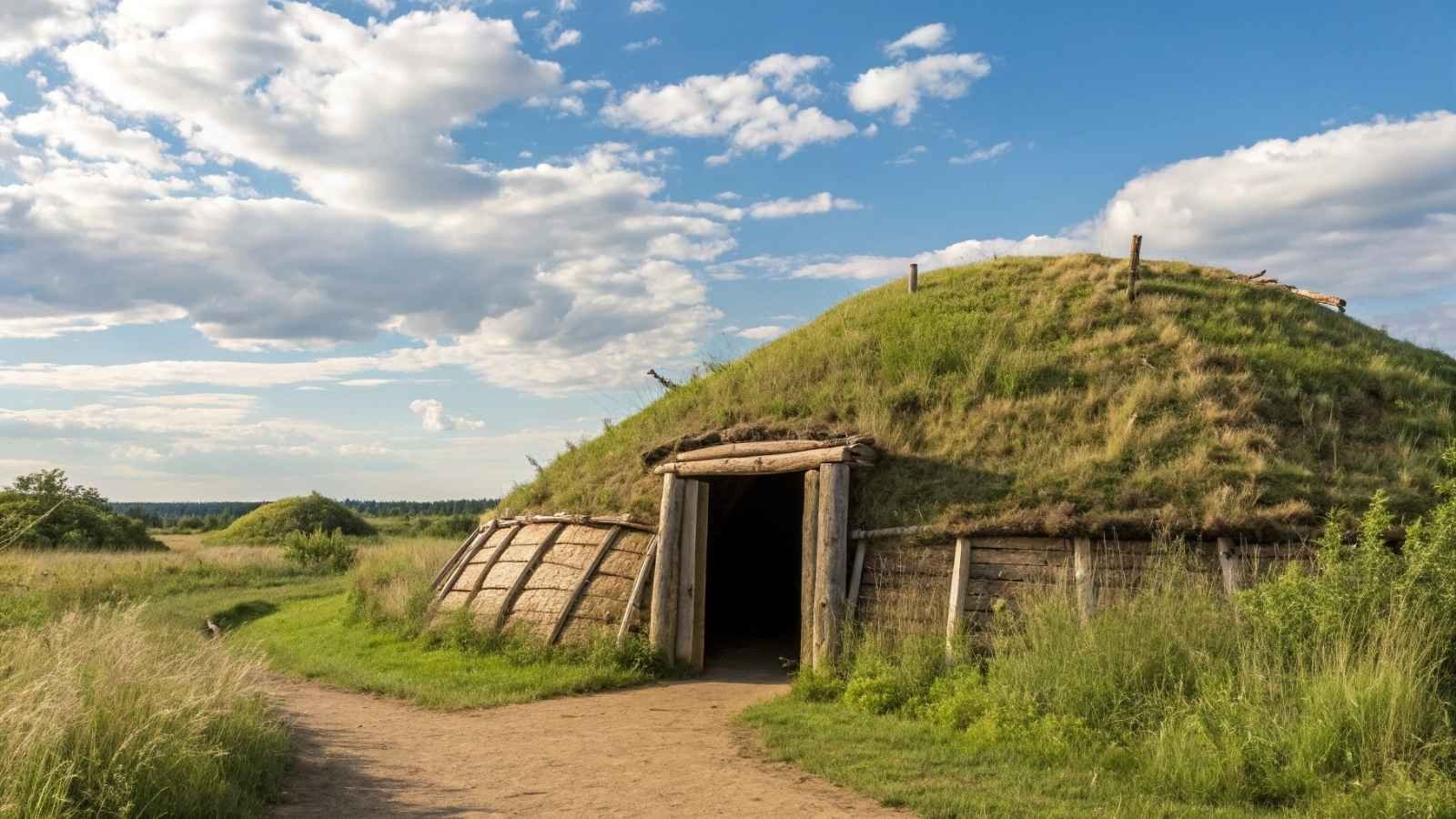
Set along the rolling plains of North Dakota, Knife River tells the story of the Hidatsa people and their earthlodge villages. Unlike cliff dwellings or towering mounds, the lodges here were round, dome-shaped homes built from timber and earth, creating warm, communal spaces that stood strong against harsh winters. The reconstructed earthlodge at the site brings this history to life in a tactile way—you can step inside and sense the scale and design of a traditional home.
This was more than a settlement; it was a center of trade. Knife River sat on key routes for exchanging furs, tools, and ideas across the Great Plains. When Lewis and Clark came through, they encountered the community here, including Sacagawea, who would play a pivotal role in their expedition. Standing on these plains, it’s easy to see why this area became such an important hub—it’s fertile, with rivers providing both food and transportation.
Knife River feels less monumental than some other sites but more intimate and personal. It’s about daily life, resilience, and community spirit carried forward across centuries.
Useful Details:
- Best Months to Visit: Late Spring to Early Fall (pleasant weather on the plains).
- Don’t Miss: The reconstructed earthlodge, village sites, and river trails.
- Access Tip: Bring good walking shoes—the trails lead you through open prairie.
- Nearest Town: Stanton, North Dakota.
12. Effigy Mounds National Monument – Iowa
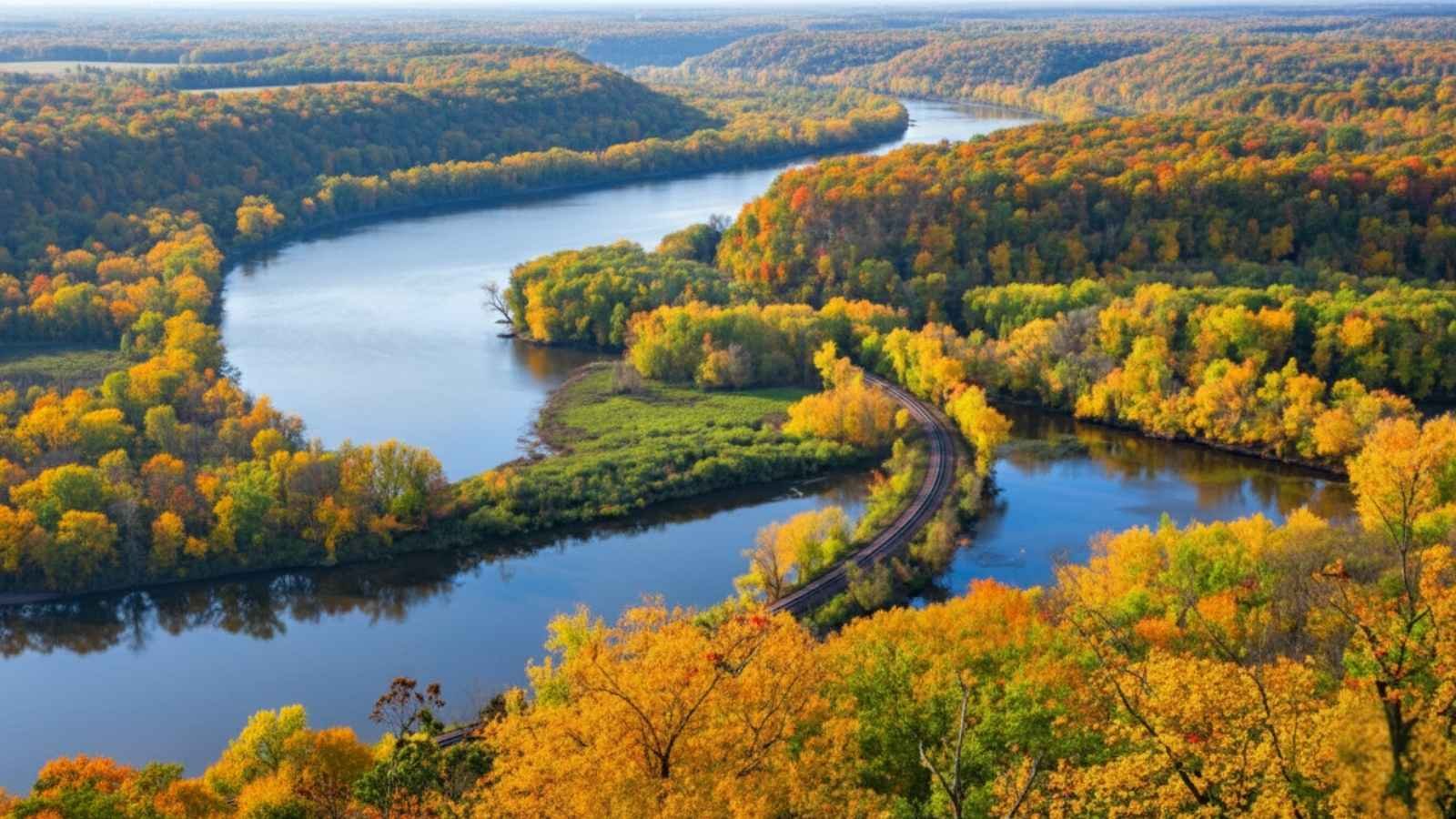
Effigy Mounds is one of the most poetic sites on the list. Here, ancient earthworks shaped like animals—bears, birds, and serpents—rise gently from the Iowa landscape. Created by Native peoples over a thousand years ago, these mounds are both burial sites and spiritual expressions tied to the natural world. Something is moving about walking a trail and suddenly realizing the ground beneath you has been shaped into a soaring bird or a lumbering bear, visible best from above.
The site stretches along the bluffs of the Mississippi River, offering a combination of cultural depth and natural beauty. From overlooks, you see sweeping river views while knowing that beneath the forested hills lie carefully constructed ceremonial mounds. It’s a place where the line between landscape and human creativity blurs, and that blending creates an almost meditative atmosphere.
Effigy Mounds doesn’t overwhelm with size or grandeur—it stirs reflection. It invites visitors to slow down, look closely, and think about how ancient peoples connected their spiritual beliefs to the world around them. It’s quieter than some other sites, but no less powerful.
Useful Details:
- Best Months to Visit: May through October (mild hiking weather).
- Don’t Miss: Bear Mound, Marching Bear Group, and Mississippi River overlooks.
- Access Tip: Trails range from easy to moderate—bring water and take your time.
- Nearest Town: Harpers Ferry, Iowa.






